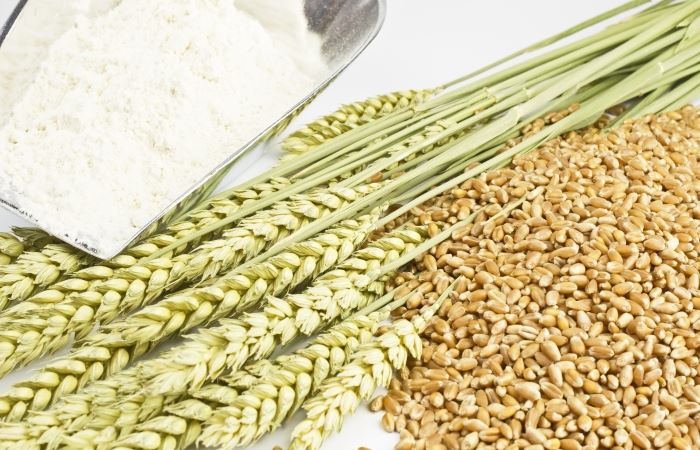Treatment of wheat allergy
In classical terms, wheat allergy should only require the avoidance of wheat and wheat containing products. However, the possibility of cross-reaction with other cereals and plants must be considered, particularly in the management of IgE-medicated allergy.
Wheat may cross-react with grass pollen, rye and barley and the clincal relevance of this is poorly understood. Studies looking into the cross-reactivity between wheat, rye and barley, found a clinical cross-reactivity of around 25% - 55%. Therefore, even though these clinical cross-reactions do not always exists, it clearly is a problem for some [1,2]. Therefore in some cases of wheat allergy, patients may be advised to avoid rye and barley in addition to wheat.
Wheat can be cross-contaminated with other grains during manufacturing but the clinical relevance of this for both IgE and non-IgE mediated wheat allergy (apart from coeliac disease) is not clear. Avoiding foods that state “may contain traces of wheat” is another highly debated point in food allergy. Having to avoid all products containing warnings of “may contain” may have a financial impact and also affect quality of life. The decision on whether to adopt a more restrictive approach such as this will be based on factors including:
In terms of wheat, according to the EU legislation the following has to be clearly identified on the label:
Cereals containing gluten namely wheat (such as spelt and Khorasan wheat), rye, barley, oats and their hybridised strains and products thereof, except:
At the end of 2014 [3], new legislation from the EU came into force, which requires food businesses to provide allergy information on food sold, unpackaged, in for example restaurants, catering businesses, deli’s, bakeries and sandwich bars. The Food Standards Agency has produced guidance to help businesses with this [4].
Wheat can be cross-contaminated with other grains during manufacturing but the clinical relevance of this for both IgE and non-IgE mediated wheat allergy (apart from coeliac disease) is not clear. Avoiding foods that state “may contain traces of wheat” is another highly debated point in food allergy. Having to avoid all products containing warnings of “may contain” may have a financial impact and also affect quality of life. The decision on whether to adopt a more restrictive approach such as this will be based on factors including:
- Severity of past reactions
- Amount of wheat reacted to in the past
- Co-existing asthma
- Severity of other food allergy
Labelling
Those avoiding wheat should be able to read food labels and understand labelling laws, which vary across the globe. In the EU the food labelling law [3] for pre-packed foods requires that all pre-packed food, including alcoholic drinks, sold in the UK or the rest of the EU clearly list all ingredients, including any of the major allergens, including wheat, even if only present in small amounts.In terms of wheat, according to the EU legislation the following has to be clearly identified on the label:
Cereals containing gluten namely wheat (such as spelt and Khorasan wheat), rye, barley, oats and their hybridised strains and products thereof, except:
- wheat based glucose syrups including dextrose
- wheat based maltodextrins
- glucose syrups based on barley
- cereals used for making alcoholic distillates including ethyl alcohol of agricultural origin
At the end of 2014 [3], new legislation from the EU came into force, which requires food businesses to provide allergy information on food sold, unpackaged, in for example restaurants, catering businesses, deli’s, bakeries and sandwich bars. The Food Standards Agency has produced guidance to help businesses with this [4].
Advice regarding wheat avoidance
A referral to a registered dietitian is crucial to ensure that the diet remains balanced and healthy while avoiding wheat in appropriate levels.Foods to avoid, foods that may contain wheat and suitable foods
| Foods to avoid | Foods that may contain wheat | Suitable foods |
|---|---|---|
|
|
|
References
- Jones SM, Magnolfi CF, Cooke SK, Sampson HA. Immunologic cross-reactivity among cereal grains and grasses in children with food hypersensitivity. J Allergy Clin Immunol 1995; 96:341-51.
- Pourpak Z, Mesdaghi M, Mansouri M, Kazemnejad A, Toosi SB, Farhoudi A. Which cereal is a suitable substitute for wheat in children with wheat allergy? Pediatr Allergy Immunol 2005; 16:262-6.
- http://eur-lex.europa.eu/legal-content/EN/ALL/?uri=CELEX:32011R1169
- Food Standards Agency (2008) What to consider when labelling food. London: Food Standards Agency.
www.drschaer-institute.com

